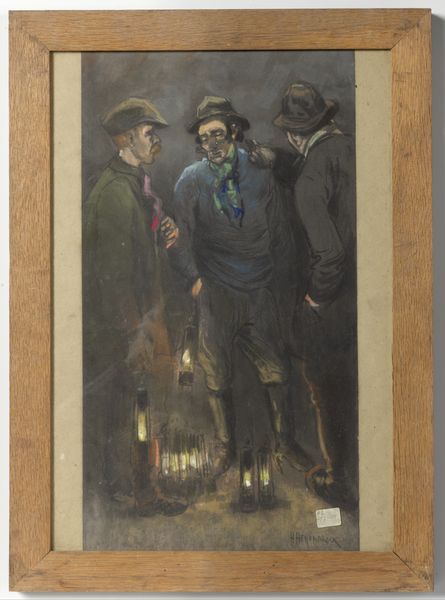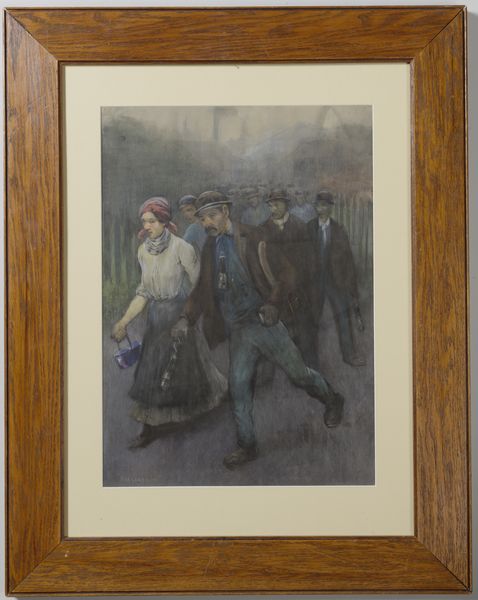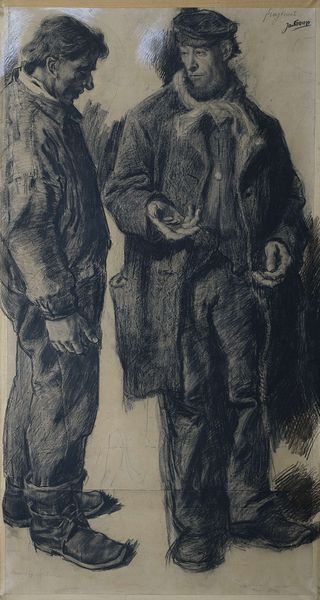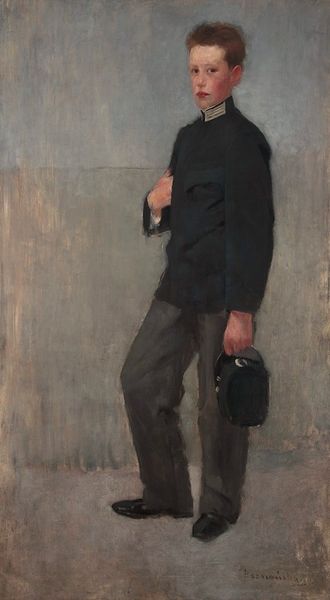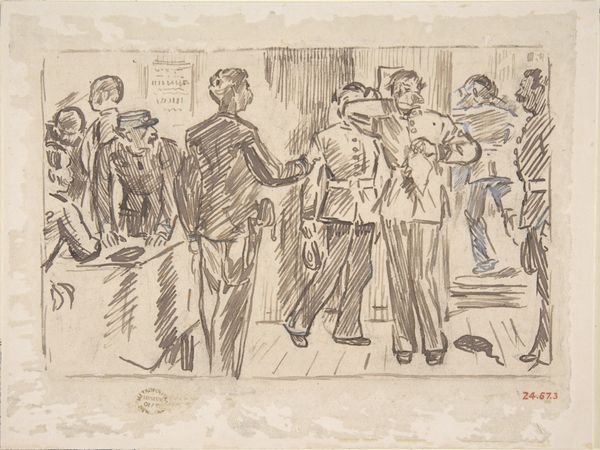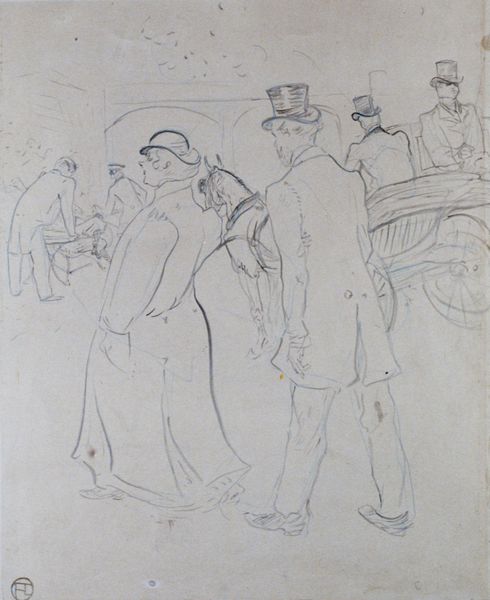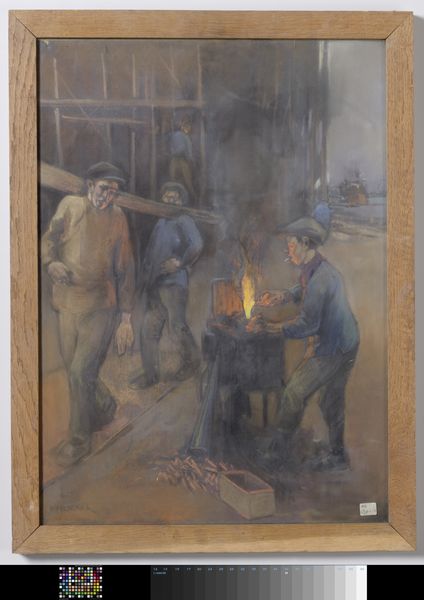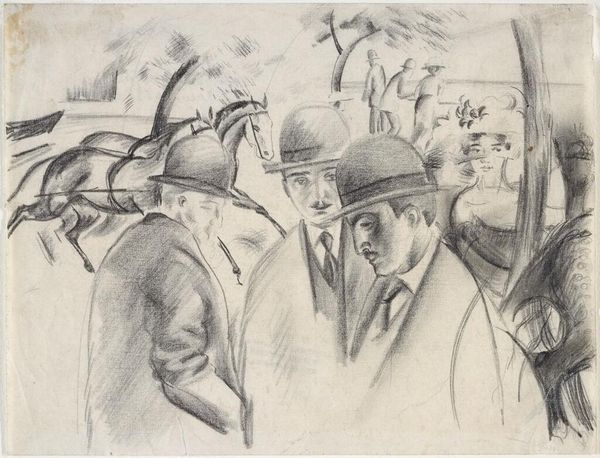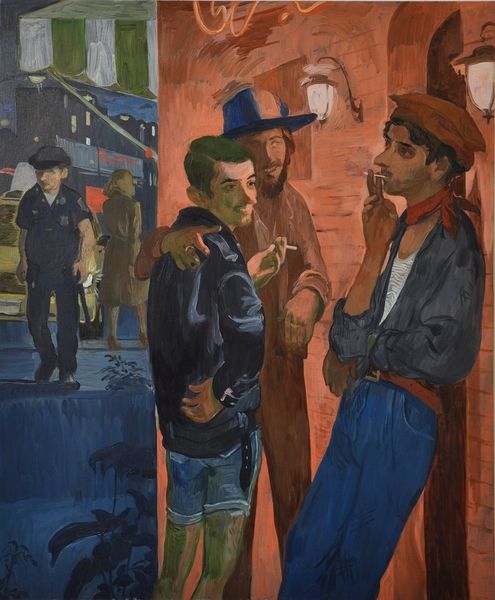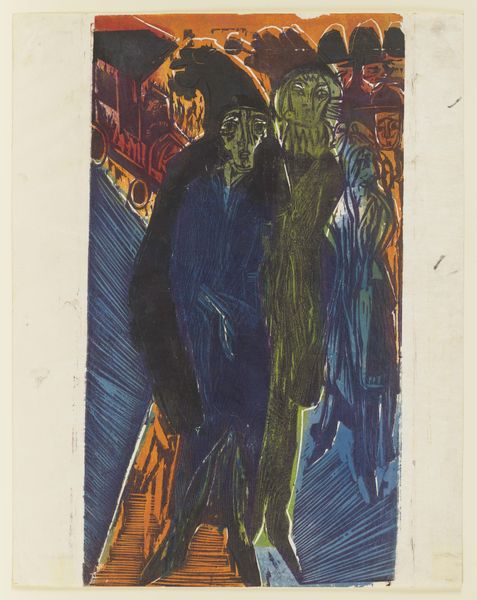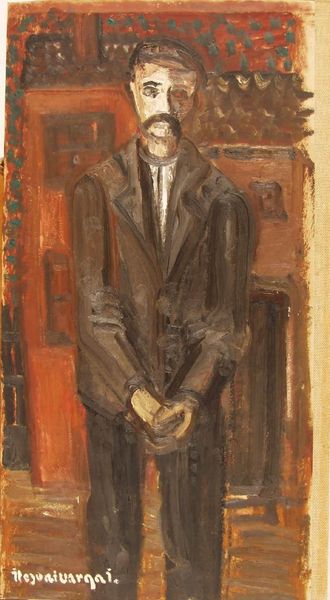
painting, charcoal
#
portrait
#
painting
#
social-realism
#
oil painting
#
genre-painting
#
charcoal
#
realism
Dimensions: height 93 cm, width 63.5 cm, height 101 cm, width 70.7 cm, depth 2 cm
Copyright: Rijks Museum: Open Domain
Curator: Look at the somber atmosphere captured in Herman Heijenbrock's work, likely created sometime between 1900 and 1948. Titled "Mijnwerkers verlaten een schachtkooi," or "Miners Leaving a Cage," it depicts a group of miners. What's your initial take on this painting? Editor: Bleak. It’s all shades of gray and muted blues, giving it a rather depressive and somber mood. The light sources seem to be strategically placed, adding depth to the composition—but everything looks so dull and dirty. Curator: The dullness, I think, emphasizes the tough lives of these workers and it has been created with oil and charcoal on canvas. Note how the artist uses light—it almost seems generated by the workers’ lamps—to add realism. The central figure stands out as he walks towards us, an assertive symbol of the industrial workforce, their labor extracted for production and profit. Editor: The texture in this piece is particularly interesting—the visible strokes lend it an unfinished feel, creating an almost melancholic rhythm across the canvas, contrasting with the central figure which is standing right out and breaking this feeling. Is it, by chance, a metaphor for a breaking chain? Curator: You've hit upon something! These men and their labor sustained an entire economy; their exploitation fueled industry. By depicting these miners emerging from their "cage"—that mine shaft—Heijenbrock exposes the industry’s raw human cost, making "Mijnwerkers verlaten een schachtkooi" as an example of social realism. Editor: I keep coming back to the limited palette. It draws focus to form and structure, highlighting a kind of brutal aesthetic of labor. Those downward-pointing pickaxes at the bottom feel particularly striking, creating dynamic diagonals within the static group of workers, and the light feels artificially allocated—I think is used to subtly emphasize the workers faces and gear, inviting a very structural reading of their characters and position. Curator: Yes! Heijenbrock challenges our typical assumptions of artistic subjects—away from landscapes or portraiture. Instead, he directs attention to the people and activities driving industry, and also hints about their social and material standing, the social implications behind. Editor: Considering that, examining how light and composition are constructed provides valuable insight into social hierarchies. A poignant piece—brutally aesthetic but with such limited use of material and color!
Comments
No comments
Be the first to comment and join the conversation on the ultimate creative platform.
